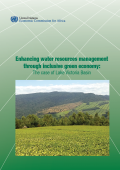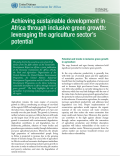

The Coruh/Chorokhi river system is of great economic importance to both Turkey and Georgia because of its largely undeveloped but economically exploitable potential for hydropower. On both sides of the border a large number of hydropower projects are being implemented unilaterally in which private investors play the key role, following liberalisation of the energy sectors in Turkey and Georgia. This has been promoted in both countries, despite the resulting social and environmental costs, particularly in Turkey.
Negative effects – i.e., the changes in sedimentation and the river flow regimes – moving from upstream interventions in Turkey to downstream Georgia – have still not been resolved, and they will put electricity generation in Georgia at risk when the hydroelectricity plants start operating. This article explores regional disputes and the degree of cooperation that exists, and analyses the effect that the efforts of relevant actors to establish regional electricity trading are having on the current problems. The creation of a regional electricity market seems to be opening up a new avenue for cooperation also on water.
Achieving the 2030 Agenda will be a challenge for all countries. It is however particularly salient for the 48 Least Developed Countries, where levels of deprivation are acute, infrastructure is inadequate, economies are vulnerable and capital is in short supply. Yet these are the countries we need to reach first if we are to meet the aspiration to “leave no on behind”.

Lake Victoria in East Africa, the world’s second largest lake, is endowed with abundant water and other natural resources. The lake is transboundary and of significance to its basin countries – which are also East African Community (EAC) partner States (Burundi, Kenya, Rwanda, Uganda and United Republic of Tanzania) – and basin communities because of its role in supporting valuable ecosystem services, livelihood systems and economic activities. The basin’s natural resource endowments include water resources (the lake’s estimated volume is 2,700 km3); rivers, streams and wetlands; abundant and fertile land; natural forest resources; minerals; and wildlife, including a high annual fish yield estimated at more than $550 million. It also hosts the crested crane and the globally threatened sitatunga – a swamp dwelling antelope.

This policy brief is the second in a series of six briefs drawn from the fifth edition of the Sustainable Development Report on Africa, a joint publication of the Economic Commission for Africa (ECA), the Food and Agriculture Organization of the United Nations, the United Nations nvironmentProgramme, the United Nations Industrial Development Organization and the United Nations Development Programme on the theme “achieving sustainable development in Africa through inclusive green growth”. The brief highlights the role of agriculture in promoting inclusive green growth in the region.
Implementing inclusive green growth interventions in subsectors of agriculture including the crop, agro forestry and livestrock will bring value addition by enchaing productivity and increasing household revenue while reducing vulnerability to the growing threats of climate change. The report provides best practices from various subsector and summarises lessons learned.
